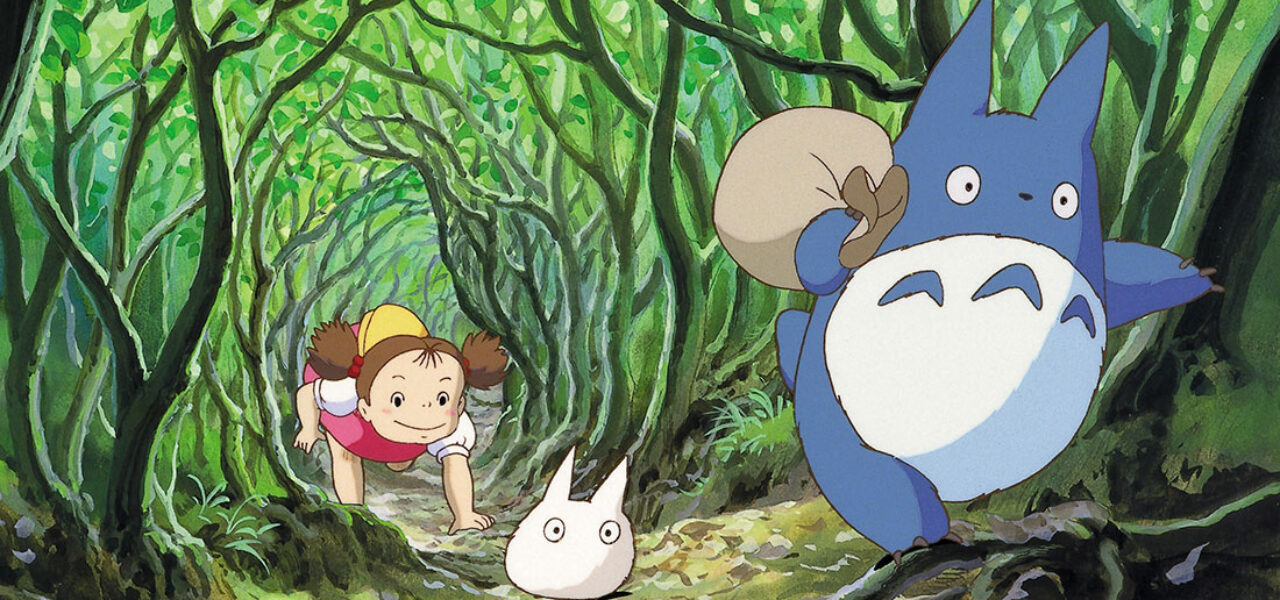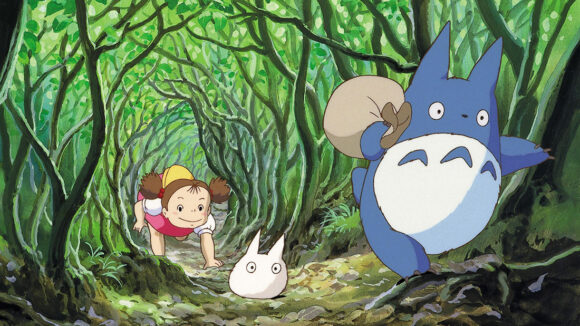

Academy Museum Will Debut Hayao Miyazaki Exhibition In April 2021
The long-awaited Academy Museum of Motion Pictures announced details today about its inaugural exhibition, simply titled “Hayao Miyazaki.”
Billed as the first North American museum retrospective dedicated to the iconic Japanese filmmaker, the temporary exhibit will be available to visitors when the museum opens to the public for the first time on April 30, 2021.
The Miyazaki exhibit will offer more than 300 objects and drawings as part of its exploration of Miyazaki’s filmography. Many of the drawings and other pieces have never been on public view outside of Japan. The exhibition, which will be on view in the museum’s Marilyn and Jeffrey Katzenberg Gallery, will also include large-scale projections of film clips and immersive environments.

“We could not be more excited to launch our new institution with the most comprehensive presentation of Hayao Miyazaki’s work to date,” said Academy Museum director Bill Kramer. “Honoring the masterful career of this international artist is a fitting way to open our doors, signifying the global scope of the Academy Museum.”
The museum has released a detailed description of how the exhibition is organized. It is reprinted in full below:
Thematically organized in seven sections, the exhibition is designed as a journey. To enter, visitors follow four-year-old Mei, a character from My Neighbor Totoro, into the Tree Tunnel gallery, a transitional space that leads into Miyazaki’s enchanted worlds. Emerging from the Tree Tunnel, visitors will find themselves in the Creating Characters gallery, which features a multi-screen installation of short clips of Miyazaki’s main protagonists. This section highlights how his characters are developed from concept to creation and features original character design drawings from My Neighbor Totoro, Kiki’s Delivery Service (1989) and Princess Mononoke (1997). Some of these artworks have never before been seen outside of Japan. In the following Making Of gallery, visitors will learn more about Miyazaki’s long-term collaboration with the late Isao Takahata, with whom he founded Studio Ghibli. Visitors will view Miyazaki’s early works as an animator, including the groundbreaking TV series Heidi, Girl of the Alps, and his first feature film, Lupin the 3rd: The Castle of Cagliostro (1979).A special tribute to Nausicaä of the Valley of the Wind (1984) emphasizes the importance of this beloved film for Miyazaki’s career and the founding of Studio Ghibli.
From there, visitors move into the Creating Worlds gallery, a space that evokes Miyazaki’s fantastical worlds. The gallery will capture the contrast between beautiful, natural, and peaceful environments and the industrial settings dominated by labor and technology that are also often featured in Miyazaki’s movies. Visitors can view concept sketches and backgrounds that offer insight into Miyazaki’s imagination, including an original imageboard from his first Ghibli film Castle in the Sky (1986) and artworks from subsequent Ghibli features. Other areas explore Miyazaki’s fascination with complex vertical structures, such as the famous bathhouse in Spirited Away, and the underwater world of Ponyo (2008), as well as Miyazaki’s interest in flying, as seen in Porco Rosso (1992) and The Wind Rises (2013). As a highlight of the exhibition, visitors can enjoy a moment of quiet contemplation in the Sky View installation, addressing another frequent motif in Miyazaki’s films: the desire to slow down, reflect, and dream.
Next, the Transformations gallery affords visitors the opportunity to explore the astonishing metamorphoses often experienced by both characters and settings in Miyazaki’s films. In Howl’s Moving Castle (2004), for example, the protagonists go through physical transformations that reflect their emotional states, while in other films, such as Nausicaä of the Valley of the Wind, Miyazaki creates mysterious and imaginative ways to visualize the changes that humans impose on the natural world.
Visitors then enter the exhibition’s final gallery Magical Forest through its Mother Tree installation. Standing at the threshold between dream and reality, colossal, mystical trees in many of Miyazaki’s films represent a connection or gateway to another world. After passing through the installation, visitors encounter the spirits of the forest, such as the playful Kodama from Princess Mononoke, through an array of storyboards and mixed media. Visitors exit through another transitional corridor, which guides them from the imaginative worlds of Hayao Miyazaki back into the museum.
The “Hayao Miyazaki” exhibit is curated by Academy Museum exhibitions curator Jessica Niebel and assistant curator J. Raul Guzman.
A 256-page exhibition catalog will be published by the Academy Museum in collaboration with DelMonico Books. The book will include a foreword by Toshio Suzuki, essays by Pete Docter, Daniel Kothenschulte, and Jessica Niebel, as well as an illustrated filmography.

The exhibition will also be complemented with film screenings (in both English and Japanese) at the Academy Museum, public program, and merchandise created specifically for the exhibition.
Located at the corner of Wilshire Boulevard and Fairfax Avenue in Los Angeles, the Academy Museum is housed in the historic May Company Building, originally completed in 1939. Designed by Renzo Piano, the museum will have six floors including exhibition spaces, a 288-seat theater, an education studio, special event spaces, conservation areas, a café, and store. A new spherical addition will connect to the May Building via glass bridges and will feature a 1,000-seat theater and rooftop terrace.


.png)